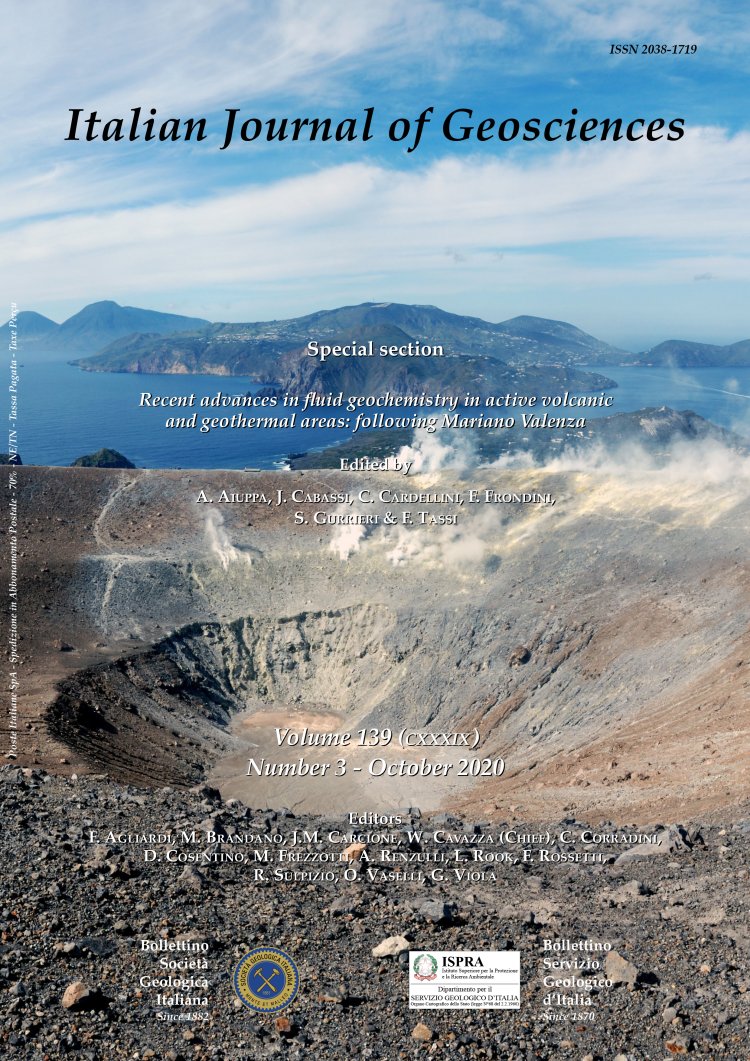

The fumarolic CO2 output from Pico do Fogo volcano (Cape Verde)
Alessandro Aiuppa (1), Marcello Bitetto (1), Andrea L. Rizzo (2), Fatima Viveiros (3), Patrick Allard (4), Maria Luce Frezzotti (5), Virginia Valenti (5) & Vittorio Zanon (3,4)
(1) Dipartimento DiSTeM, Università di Palermo, Italy.
(2) Istituto Nazionale di Geofisica e Vulcanologia, Sezione di Palermo, Italy.
(3) Instituto de Investigação em Vulcanologia e Avaliação de Riscos, University of the Azores, Portugal.
(4) Institute de Physique du Globe de Paris, Université de Paris, France.
(5) Dipartimento di Scienze dell’Ambiente e della Terra, Università di Milano Bicocca, Italy.
Corresponding author e-mail: alessandro.aiuppa@unipa.it
Volume: 139 (2020) f.3
Pages: 325-340
Abstract
The Pico do Fogo volcano, in the Cape Verde Archipelago off the western coasts of Africa, has been the most active volcano in the Macaronesia region in the Central Atlantic, with at least 27 eruptions during the last 500 years. Between eruptions fumarolic activity has been persisting in its summit crater, but limited information exists for the chemistry and output of these gas emissions. Here, we use the results acquired during a field survey in February 2019 to quantify the quiescent summit fumaroles' volatile output for the first time. By combining measurements of the fumarole compositions (using both a portable Multi-GAS and direct sampling of the hottest fumarole) and of the SO2 flux (using near-vent UV Camera recording), we quantify a daily output of 1060±340 tons CO2, 780±320 tons H2O, 6.2±2.4 tons H2S, 1.4±0.4 tons SO2 and 0.05±0.022 tons H2. We show that the fumarolic CO2 output from Pico do Fogo exceeds (i) the time-averaged CO2 release during 2015-type recurrent eruptions and (ii) is larger than current diffuse soil degassing of CO2 on Fogo Island. When compared to worldwide volcanoes in quiescent hydrothermal-stage, Pico do Fogo is found to rank among the strongest CO2 emitters. Its substantial CO2 discharge implies a continuous deep supply of magmatic gas from the volcano’s plumbing system (verified by the low but measurable SO2 flux), that becomes partially affected by water condensation and sulphur scrubbing in fumarolic conduits prior to gas exit. Variable removal of magmatic H2O and S accounts for both spatial chemical heterogeneities in the fumarolic field and its CO2- enriched mean composition, that we infer at 64.1±9.2 mol. % H2O, 35.6±9.1 mol. % CO 0.26±0.14 mol. % total Sulfur (S ), and 0.04±0.02 mol. % H2.
Keywords
Get Full Text